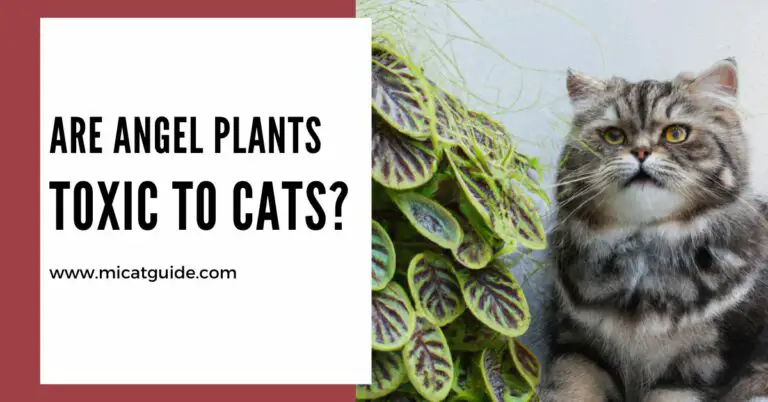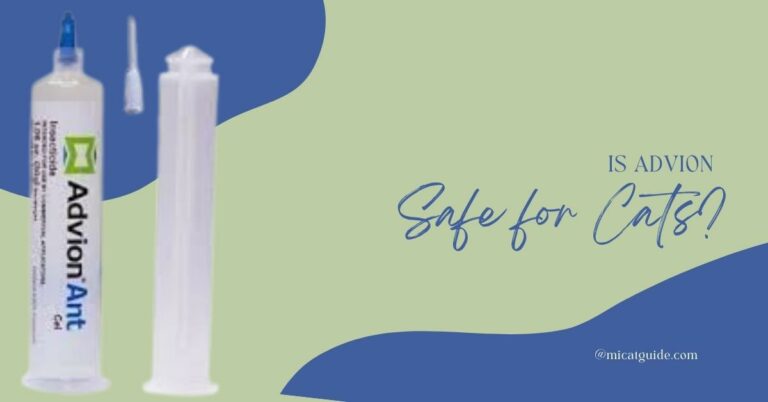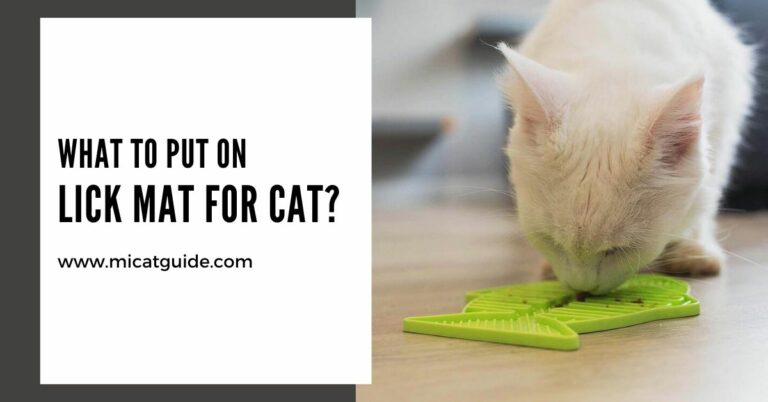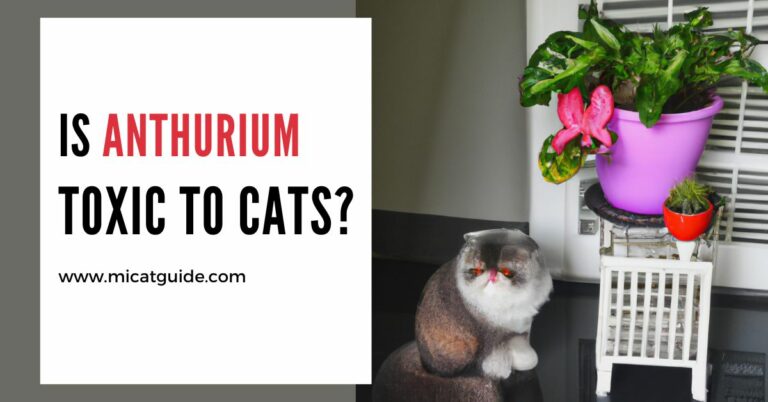Is Agave Plant Toxic to Cats? (Symptoms & Treatments)
Yes, agave plants can be toxic to cats if ingested. All parts of the agave plant contain a saponin-like compound that can cause vomiting, diarrhea, and other digestive issues.
Additionally, the spines on some varieties of agave are sharp and can cause physical harm if ingested or handled by your cat. It is best to keep all agave plants out of the reach of cats, as even contact with the plant can result in skin irritation or rashes.
It is important to monitor your cat around any type of plant, as even non-toxic varieties can cause digestive distress if ingested. If you think your cat has eaten any part of an agave plant, contact your veterinarian immediately for professional medical advice.
Here in this blog post, I’ll explain why agave plants can be toxic to cats and the steps you can take to keep your pet safe. I’ll also share some tips for pet owners to ensure the safety of their cats when it comes to plants and other potential hazards. Read on for more information.
Why is Agave Plant Toxic to Cats? (Explained)

Saponins are a type of glycoside compound that can be found in the leaves, stems and flowers of agave plants. These compounds cause irritation to cats when ingested, leading to vomiting, diarrhea and seizures. In some cases, consuming too much saponin may also lead to paralysis or even death.
The saponins found in agave plants are toxic to cats because they destroy red blood cells, causing anemia. They can also damage the liver and kidneys, leading to long-term health problems.
It is important for pet owners to take steps to ensure their cat does not come into contact with or ingest any part of an agave plant.
Interesting Read: Is Aglaonema Toxic to Cats?
Diagnosis of Agave Plant Poisoning in Cats

To diagnose if your pet has Agave poisoning, first ensure they have consumed the plant. Then, assess how much of the plant was eaten and check for common symptoms and behavioral changes.
If you cannot identify how much Agave was nibbled, do a thorough at-home behavioral diagnosis before taking them to the vet. This will make clinical diagnosis more straightforward.
1. Behavioral or Physical Diagnosis
In most cases, physical effects will show up within two hours after ingestion.
Symptoms of Alocasia Poisoning in Cats
The symptoms include:
- If your pet is in pain and feels irritated, you will be able to tell by these cues: violent shaking of the head, excessive drooling, pawing at the mouth, barfing/vomiting.
- In addition to physical cues of discomfort, your animal may also vocalize their unease through whining, meowing or yelping in an abnormal tone that sounds hoarse or weak.
- Seizures , difficulty breathing and panting are further signals that something is wrong. Symptoms such as these need prompt medical attention if they occur.
2. Medical Diagnosis

Agave poisoning in cats can be difficult to diagnose as it shares many of the same symptoms as other feline illnesses.
However, by providing your veterinarian with information about what part of the plant was consumed, when it happened, and any other symptoms you may have noticed, they will be able to perform the necessary tests to determine if your cat has been poisoned.
One of the first tests that will likely be performed is a complete blood count (CBC) to check for any abnormalities. A blood chemical profile will also be conducted to look for changes in the levels of certain chemicals in the blood.
Blood gases and a glucose test may also be ordered depending on the symptoms exhibited by your cat. If Agave poisoning is suspected, treatment will typically involve supportive care such as IV fluids and oxygen therapy as well as treating any underlying causes. If the poison has been ingested recently, inducing vomiting may also be recommended.
You can also read: Are Avocado Plants Toxic To Cats?
First Aid and Treatment for Agave Plant Poisoning

Depending on how much your pet ingests and when it occurred, the next steps will be decided. In most cases, treatment can happen at home.
1. First Aid Methods
Here I’ll list a few first aid methods that you may want to try at home
- Consider wearing protective gloves and gently brushing off any visible parts of the plant attached to your pet’s fur or skin.
- Thoroughly clean the cat’s mouth, removing all traces of the plant. Wash several times and rinse with plain water.
- To soothe the pain, give your animal friends yogurt, milk, cheese, or another food that contains calcium. This will hopefully cause some of the calcium oxalate crystals to form.
- To flush the toxin out of your cat’s digestive system, give them a tablespoon of activated charcoal diluted in water every four to six hours.
These are the steps to help your pets if they have Agave poisoning. You need to make sure that the pet is under monitoring for a few days.
If your cats consume the plant, it can be fatal. But the lethality also depends on how timely your cat received treatment. Take them to a vet as soon as you find out they have consumed the plant. If their symptoms do not get better after 2-3 hours of first aid care, take them to hospital immediately. Use the following Helplines:
- Pet Poison Helpline: 855-764-7661
- ASPCA Animal Poison Control Center: 888-426-4435
You can also read: Is Anthurium Toxic to Cats?
2. Treatment Stages
When you take your sick cat to the veterinarian, they will undergo the following treatments so that they can recover quickly.
| Medicines | Dosage | Purpose |
|---|---|---|
| Activated charcoal | 1 tablespoon / 4-6 hour | Flush out toxins from the body |
| Antihistamines | 1 tablet / 8-12 hours | Reducing allergic reaction |
| Vitamin B complex | 1 injection / 12 hours | Countering neurological issues |
| Vitamin C | 1 tablet / 6-8 hours | To minimize the effects of toxins |
Before giving your cat or dog any prescription drugs, always speak with your veterinarian first. Note that this article is for informational purposes only.
Recovery Stages for Agave Plant Poisoning

When your pet is showing signs of recovery, it should be closely monitored and kept comfortable in a clean environment. A healthy diet, with plenty of water, should be provided.
Your veterinarian will provide instructions on how to continue caring for your pet at home and what foods are safe to feed them. You might also need to adjust the dosage of their medications or administer additional treatments as needed.
Follow-up appointments with your vet may also be necessary to check in on your pet’s progress and make sure the treatment is working.
It’s also important to keep an eye out for any signs of infection or further complications, such as vomiting, diarrhea, labored breathing, or other changes in behavior. If you notice any of these symptoms, be sure to contact your veterinarian right away.
How to Prevent Agave Poisoning in Cats?

Here I’ll list some tips to help keep your cats safe from Agave poisoning:
1. Keep Cats Away from Plants
I know it’s tempting to let your cats explore the garden and house plants, but it can be dangerous. So make sure you keep your cat away from any kind of plants with pointy leaves or sharp tips.
2. Avoid Growing Agave Plants in your Garden
From now on, avoid planting agave plants in your garden. If you already have them planted, make sure to remove them as soon as possible and replace them with safer plants.
3. Use Pet Evidence Plants
If you absolutely have to have plants in your home, choose pet-proof ones. These are plants that don’t contain any toxic ingredients, so your cats will stay safe around them.
4. Educate Your Kids about Agave Poisoning
Educating your kids about the dangers of Agave poisoning is also important. Teach them to be careful around plants and not to let cats or other pets near them.
5. Provide Proper Care for Your Cat
It’s also important to provide proper care for your cat, which includes feeding it nutritious food and giving it regular vet check-ups. This way, you can detect any health problems before they become too serious.
By following these guidelines, you can help ensure that your cats stay safe and healthy!
My Final Thoughts
As you can see Agave plant is something to be taken seriously. Even if your cat has already eaten it, you should take them to the vet immediately and follow the instructions that your vet will give you.
Take preventive measures such as keeping cats away from plants, avoiding growing Agave plants in your garden and educating your kids about Agave poisoning. Provide proper care for your cat, including feeding it nutritious food and giving it regular vet check-ups.
With the right care and attention, your cat can make a full recovery from Agave poisoning. So be sure to stay vigilant and do what you can to ensure your pet’s safety. Good luck!






